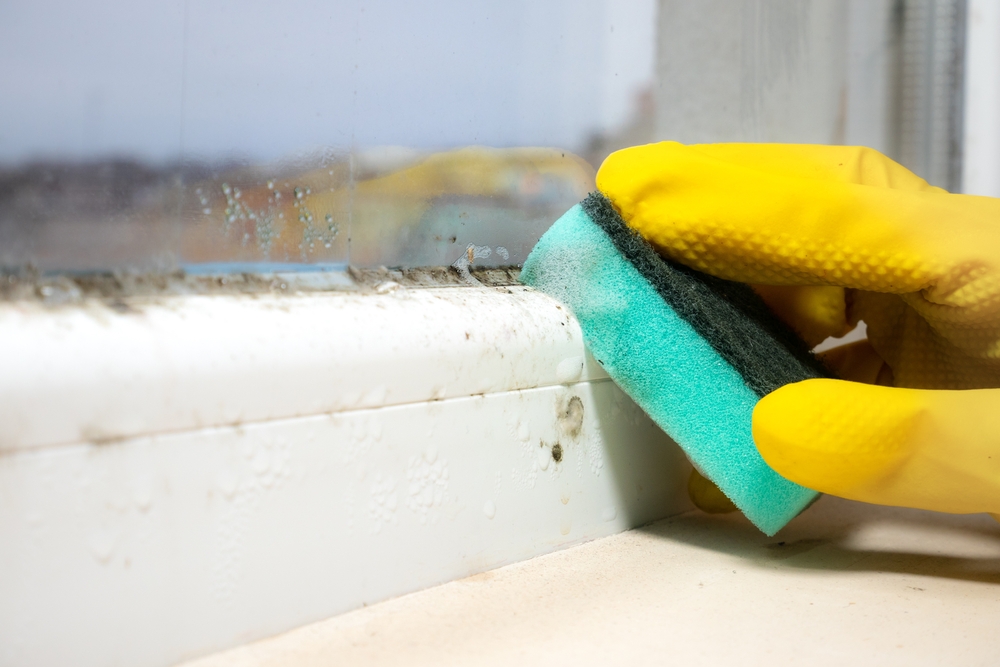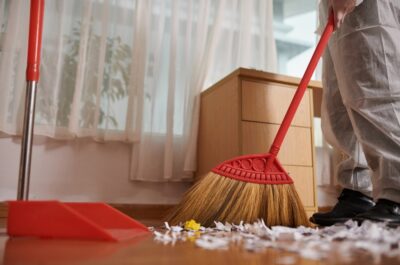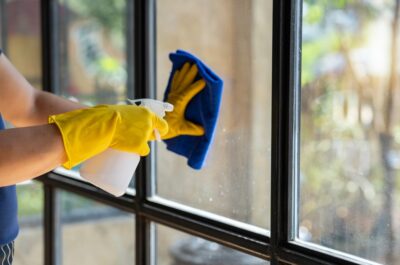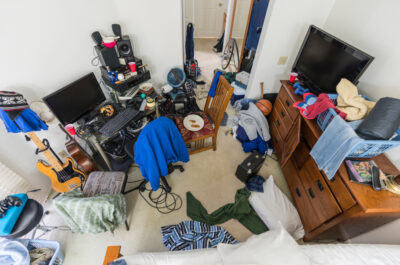Maintaining a clean and tidy home is not only aesthetically pleasing but also contributes to a healthier and more comfortable living environment. However, the task of house cleaning can often feel daunting and time-consuming. The good news is that with the right strategies and know-how, you can streamline your cleaning routine, achieve remarkable results, and make the process more manageable.
Ceramic tile floors
Don’t worry about wax or floor finish. Just sweep and mop on a regular basis and they’ll stay clean and shiny. Mop floors with clear water or just a dash of liquid dish soap. Be sure to change the water when it gets cloudy. Too much soap or dirty water will make floors dull or sticky. Don’t use scrub pads on ceramic tile floors or you might scratch them
Grout
Old grout may need cleaning with a wax stripper or heavy-duty cleaner plus a grout brush. Use a bleaching cleanser on tough spots. Once you have the grout as clean as you can get it, rinse it well. When it’s thoroughly dry, apply a coat of masonry sealer so that it won’t absorb dirt in the future. For mildewed grout in tubs or showers, use a grout brush with a 1:5 solution of chlorine bleach and water. Never use bleach in combination with any ammonia-based product and be sure the area is well-ventilated. When you’re done cleaning, rinse the area well to remove any traces of bleach.
Clean colored grout with a heavy-duty cleaner and a grout brush, but don’t use bleach as this may remove the color from the grout. You’ll want to be sure not to use a bleaching solution on colored grout. A masonry sealer can be applied to clean, colored grout to ward off future stains.
Hard water spots
Hard-water deposits are alkaline, so an acid-based cleaner is the best approach for cleaning them. Phosphoric acid works well and is safe for most surfaces. If you buy cleaners containing phosphoric acid in a grocery store, it will likely contain about 4 percent to 6 percent acid. You can purchase lime scale removers at janitorial supply stores that contain 8 percent to 12 percent acid, which will get the job done faster. A higher concentration of acid is safe on most household surfaces as long as you rinse the surface to remove all traces of the acid once the cleaning is complete. You should let acid sit for a few minutes after you apply it to let it work. Tough hard-water deposits may take more than one application. Scrub the applied areas with a white, nylon-backed scrub sponge. Make sure you read any manufacturer’s warnings before applying phosphoric acid solutions to surfaces in your home
Mini-blinds
Wipe down mini-blinds with a damp fabric softener sheet. This eliminates the static that causes dust to stick. The same trick works for TV and monitor screens.
Painted wall cleaning
The type and quality of the paint greatly affects how you clean a wall and how clean it will come. There are generally four types of paint finishes you might encounter:
Baked enamel (most appliance finishes), epoxy enamel and automotive paints.
These paints are durable and stain-resistant. Dirt typically cannot penetrate the hard-finish. These types of surfaces can withstand scouring with mild abrasives and can also handle heavy-duty cleaners and degreasers when necessary. With these finishes, you need to be most careful of scratching or dulling the finish by using harsh abrasives, steel wool, colored scrub pads and strong solvents.
General-purpose enamels.
Most often found on interior walls, especially kitchen and bathroom walls, this type is stain-resistant and can handle moderate scrubbing. Do not use abrasive substances or colored scrub pads, as this finish can be scratched. Use a neutral cleaning solution and a white, nylon-backed scrub sponge. Only use heavy-duty cleaners or abrasive cleansers when you’re willing to take your chances on ruining the paint. If you have latex enamel paints, avoid leaving them wet for more than a minute or so. Oil-based enamels are more water-resistant. Keep in mind that gloss enamels are the most durable and washable, followed by semi-glosses and then satin finishes.
Latex flat.
The most common household paint, flat latex is not as washable as enamels. Heavy-duty cleaners or hard scrubbing can remove the paint along with any dirt. Use mild detergents and gentle scrubbing, and don’t let any solution sit on the surface for more than a minute.
Exterior paints.
These paints are typically oil-based or latex and should be scrubbed only with a mild detergent and then rinsed with a hose. Use a long-handled brush for hard-to-reach areas or stubborn spots. Some people like to use pressure washers on the outside of their homes, but like harsh chemicals, these can loosen the paint, so use with caution.
Pet hair removal from upholstery/carpet
To remove pet hair from upholstery, try a pet rake (a brush that has crimped nylon bristles), velour brush, tape roller or even tape wrapped around your hand on fabric and upholstery. Use light, even strokes to remove the hair. Another option is to try the rubber bottom on a clean tennis shoe or a slightly dampened sponge (as long as the dampness won’t harm the upholstery).
To remove pet hair from carpet, use a vacuum with a good beater brush or brush roll. Plain vacuums don’t generate enough lift to get all the pet hair up from the floor.
Another option for both upholstery and carpets (especially the edges where hair tends to collect and vacuums have a hard time reaching) is a “pet sponge.” These sponges, which are intended to be used dry, can be purchased at pet supply stores.
Pet stain removal from carpets
First, blot up any liquid by putting towels or absorbent rags over the spot and stepping on them. Start with gentle pressure and keep increasing it (right up to putting your full weight down). Change to fresh rags or towels, until no more moisture comes up.
For fresh stains, apply a bacteria/enzyme digester from a pet store, following the directions — it’s the only way you can deal effectively not only with the stain but also the odor. Bacteria/enzyme digesters work well but they work slowly, so leave the solution on as long as it says. Urine has probably penetrated down into the carpet and pad, so use enough solution to reach as far down as the stain did. Apply the solution, put plastic over it, and step on the spot several times until the area is well saturated. Then, leave the plastic on the whole time the digester is working, to make sure the spot doesn’t dry out.
Old or dry stains may be hard to impossible to remove, but try the bacteria/enzyme digester. If it’s a popular accident site, the bacteria may produce enough ammonia in the course of breaking down the stains to create a super-alkaline situation that interferes with their own action. In this case, you may need to neutralize the spot after the bacteria have been working for about four hours. Mix up a solution of one cup of vinegar to a gallon of warm water. Rinse the area with this and then apply a fresh batch of bacteria/enzyme solution.
If the stain or odor remains, call a professional deodorizing specialist. A complete cure will probably involve cleaning the entire carpet by extraction and replacing the pad underneath, if not replacing the carpet.
Soap scum in tubs and showers
Since preventing soap scum build-up is a lot easier than cleaning it, squeegee water off shower walls and doors after every use or wipe them down with a towel. For tile walls or frosted shower doors, apply a light coating of lemon oil periodically to help prevent build-up. For a porcelain tub, apply a light coat of boat or car wax to the sides (never the bottom) of the tub.
Too late for prevention? You’ll need a degreasing agent and lots of elbow grease. Get a good alkaline soap scum remover at a janitorial supply store or dissolve a handful of automatic dishwasher detergent in a bucket of warm water. Make sure you cover the affected area completely and let your cleaning solution soak for at least 15 minutes. Do it right after a shower since the walls will already be wet. After soaking, use a stiff scrub brush or a white, nylon-backed scrub sponge to clean the walls. You may need to soak and scrub a couple times to get rid of all the build-up, then rinse well with clear water.
Toilet bowl ring removal
Using bleach may seem like a good idea, but it won’t do the job. The earlier you attack the problem, the easier it will be to remove; a thorough cleaning with a commercial acid-based bowl cleaner may do the trick. If the bowl cleaner doesn’t work, try using a green, nylon-backed scrub sponge along with the acid. For an old ring, use a pumice stone. Take the stone and wet it with the water in the bowl, and then rub it on the ring. Make sure to keep the stone wet the entire time you’re scrubbing. Pumice stones should only be used on vitreous china toilets – never on colored, enamel or plastic fixtures. Once you’ve gotten rid of a ring, weekly cleanings should keep it from coming back.
Wood floor cleaning
Vacuum and dust mop regularly to prevent dirt from building up and damaging the surface. Any wood floor can be cleaned with a quarter-cup of apple cider vinegar mixed with a gallon of warm water. Wood floors are best cleaned on your hands and knees because you should only clean a small area at a time and then dry it and move on. Never get wood floors too wet or allow them dry naturally. Finished wood floors often can be cleaned with just water. However, the finish will eventually wear off, and you’ll either have to re-finish the floors or start waxing them.
Repairing damaged wood furniture
Because Freedom Maids only does routine dusting and lemon oiling of wood furniture, we cannot address questions about damage from moisture, candle wax, products, etc. We suggest you visit our affiliate, Furniture Medic, a furniture repair and restoration company. If you have questions about furniture restoration or repair, please feel free to visit the Furniture Medic web site
Stain removal from clothes
Freedom Maids doesn’t provide laundry service, and, therefore, cannot speak effectively to stains you’ll find on fabrics. However, we have found a “stain detective” web site that may be able to help you. The site is sponsored by Tide, and can be found at: http://www.laundry.com/staindetective/
Candle wax removal from upholstery, wood or carpet
To remove the wax from carpet or upholstery, you will need a plain brown paper bag and a steam iron. Paper grocery bags work well.
Cut open the brown paper bag so it lays flat.
Lay the brown paper bag on the carpet over top of the wax. (If the bag has any printing on it, face the printing away from the carpet, facing upward.)
Set the steam iron on a moderate setting and plug it in. Allow it to warm up.
Once warmed up, place the steam iron on top of the brown paper bag over the wax spot. Move the iron back and forth over the wax spot. The iron should never come in direct contact with the carpet, only the paper bag.
As the wax warms up it will begin to absorb into the paper bag. You will see a dark spot on the paper bag.
As soon as you see a spot, move a dry area of the bag over the wax spot and continue to move the steam iron over the area.
When no further wax absorbs into the bag you have removed the wax. To remove candle wax from wood, apply a plastic bag filled with ice until the wax is brittle enough to crumble off. If there is some candle wax left, place an ink blotter on the area and apply a hot pressing iron to the top of the blotter.
Pergo floors
The manufacturers of Pergo recommend damp mopping at least once a week and sweeping or vacuuming with an attachment more often if you are concerned about scratches.
Do not use soaps or detergents because they may leave a film, dulling the floor. Difficult spots like nail polish, markers, tar and cigarette burns can be removed with acetone or nail polish remover. Pergo floors must never be waxed, polished, sanded or refinished.
Marble and granite floors
If polished marble or granite is protected with floor finish, the finish must be buffed or burnished and periodically replaced to keep the surface protected and looking good.
Because marble and granite are sensitive and porous, they need to be cleaned with a neutral cleaner solution and then polished dry. Scratched and dull surfaces can be revived with a marble restorer (available from janitorial supply stores).
Cultured marble and certain types of granite are stronger than real marble and stone, but they do lose their luster after being cleaned for years. Clean with a spray bottle filled with all-purpose or disinfectant cleaner and a soft cloth. Always keep the area wet while working. Never use powdered cleansers, steel wool, metal scrapers or colored scrub pads on cultured marble or granite. If the surface is worn and looks dull even after cleaning, polishing compound may bring back the glow. A little appliance wax, car wax or silicone sealer will also help fill fine scratches and restore the shine.
Kitchen cabinets
Most cabinets are factory manufactured and finished, and even the wooden ones have enough varnish or other protective coating on them so that you can use a cleaning solution on them. The oil slick that builds up on cabinets (especially around the handles) is a combination of kitchen grease, food smears, skin oil, and hand lotion transferred to the door. Regular all-purpose cleaners just won’t cut it, which is why you often have sticky cabinets.
If your cabinets are plastic laminate (formica) or other plastic, metal, painted metal, or glass, you can wash them all over with a strong alkaline cleaner, which can be purchased at a janitorial supply store, or a heavy-duty cleaner from the supermarket. Mix according to directions and apply the solution with a sponge. Let it sit a minute or two, then take a white, nylon-backed sponge and scrub a little anywhere it seems necessary. Remove the grimy suds from the sponge by squeezing it into the sink or a slop bucket, never back into your cleaning solution. Then, rinse with a damp cloth and wipe dry with a terry cleaning cloth, which will remove any last traces of scum and leave the cupboards clean and glowing.
Never use acids or powdered cleansers on cabinets. A good overall washing of your cabinets once a year should be enough. Keeping a spray bottle of all-purpose cleaner handy the rest of the time and spot-clean after heavy kitchen use.
On wooden cabinets, you want to take a gentler approach. To get off the tough stuff, wash around all the handles and any other grease zones first with that gentle degreaser we all have handy — hand dishwashing detergent — then wash the entire cabinet, including the handle areas you just did, with oil soap solution. Just wipe lightly with the solution, don’t saturate, and buff dry immediately with a terry cleaning cloth. Always wipe dry with the grain or pattern, if there is one. Seldom do you need to add any polish because the surface has its own sheen, which will shine forth if it’s clean. If your cabinets are dull from wear or age, a light, light spray of furniture polish once a year or so will fill in the pores and bring back some life.
Spot removal from dishwasher
Brown, red or black deposits may be caused by iron or manganese in the water. To remove, start the empty dishwasher on the rinse and hold cycle; while the machine is filling, open the door and add 1/2 cup rust remover from a janitorial supply store to the water; then allow the cycle to finish.
Fireplace hearth
Cleaning the face of a fireplace is a project that demands patience. Fireplace stone and brick may be hard, but they’re also porous. This means plenty of tiny holes for soil to accumulate in.
First, mix up a warm solution of high-alkaline cleaner and 1 ounce of chlorine bleach per gallon of water. There’s bound to be some fallout, so make sure the floor around the fireplace is well covered with dropcloths before you start. Wet the surface of the fireplace well with the solution, but don’t put on so much that it runs. Dirty water running down the face may cause hard-to-get-out streaks. Then scrub the solution in with a brush — you should see the suds getting dark and dirty as the buildup comes off. Rinse well. If the surface is shadowy after cleaning, a light cleaning with a phosphoric acid cleaner may be enough to brighten it up the rest of the way. Don’t use any acid stronger than phosphoric — it will attack and damage the brick or stone.
If the results still aren’t satisfying, make a poultice of heavy-duty cleaner, bleach and diatomaceous earth and apply it to the areas needing attention. This should draw out any remaining residue. If necessary, repeat these steps until you get the result you want. The color of the brick or stone determines how aggressive your use of bleach can be. Heavy bleaching will whiten a dark surface and cause it to look out of place. You can use a stronger solution on white or light surfaces.
If you’re not comfortable taking these kinds of chances with your facing, you may want to call in a professional chimney sweep.
Dust
Use Walk-off mats: Eighty percent of the dirt in your house walks in through the door — on people’s feet. The right kind of mats placed inside and out of all entrances will help cut down on cleaning time (vacuuming, dusting and mopping). Buy the professional kind of mats you see at the entrances to hospitals and supermarkets. You can buy these in a janitorial supply store. They’re called walk-off mats because they give the dirt a chance to be walked off before it gets in and all over. Walk-off mats are usually nylon or olefin with a rubber or vinyl back for inside the door, and rubber of vinyl-backed synthetic turf for outside on the step. They’re available in a variety of colors, and to do their job well, both the inside and outside mats should be four strides long. Vacuum your mats regularly or shake them outside. Hose them down and scrub with all-purpose cleaner solution as needed. You can also use upholstery shampoo or a wet/dray vacuum to clean them. It’s important to always hang them until they’re COMPLETELY DRY so that moisture (which can damage your floor) isn’t trapped under the vinyl backing.
Sealng: If you have any concrete or mortar joints that haven’t been sealed, they can bleed off bits of sand and concrete dust onto surrounding surfaces. You should also make sure your windows and doors seal tightly. Some utility companies will even come out and inspect your home for free to determine if you have any cracks where things could be going out or coming in.
Vacuum Care: Keep bags, filters, seals and gaskets in good repair to prevent fine dust from being blown back into the air as you vacuum.
No feather dusters: Feather dusters typically don’t do much but spread dirt around. If you have some surfaces you’re using a feather duster on, you may want to look at alternative cleaning options.
Windows
The best way to clean windows, or any large expanse of glass, is with a squeegee. It does a faster and better job.
You need a professional-quality squeegee, a window wand, and an extension pole if you’ll be doing high windows. The basic process is simple — apply the cleaning solution with the window wand, them pull all the dirt and water off with the squeegee.
Now the details.
Put a capful of ammonia or 5 drops of liquid dish detergent in 2 gallons of water. Resist the urge to use too much detergent; that is what causes streaking.
Dip your window scrubbing wand or a sponge 3/4 of an inch into the solution, picking up just enough water to wet the window without flooding it. Wet the entire window, then go back over it once to loosen any stubborn soil. Last, go all around the window against the frame with the scrubber to pick up any dirt you’ve pushed against the frame.
Dampen the squeegee blade before you start, and wipe it with a damp cloth between strokes. A dry blade will skip and jump on the window instead of gliding smoothly.
Tilt the squeegee at an angle so that only about an inch of the rubber blade presses lightly against the top of the window glass. Then pull the squeegee across the window horizontally. This will leave a 1-inch dry strip across the top of the window. By squeegeeing across the top first, you eliminate drips running down.
Place the squeegee close to the frame in the dry area near the top, and pull down to about 3 inches from the bottom of the glass. Continue this way all across the window, overlapping into the clean, dry area with each stroke, and wiping the blade with a damp cloth after each stroke.
Finish with a horizontal stroke across the bottom, and wipe any water off the sill with a damp cloth.
On some windows, it’s easier to cut the water off the frame side as well as the top, and then squeegee the entire pane using horizontal strokes.
Large (picture) windows should be wet and squeegeed half at a time, the top half first.
Finally, if you’re doing both the inside and outside the window, you may want to squeegee horizontally on one side and vertically on the other, so you can tell whether any streaks are inside or out.




